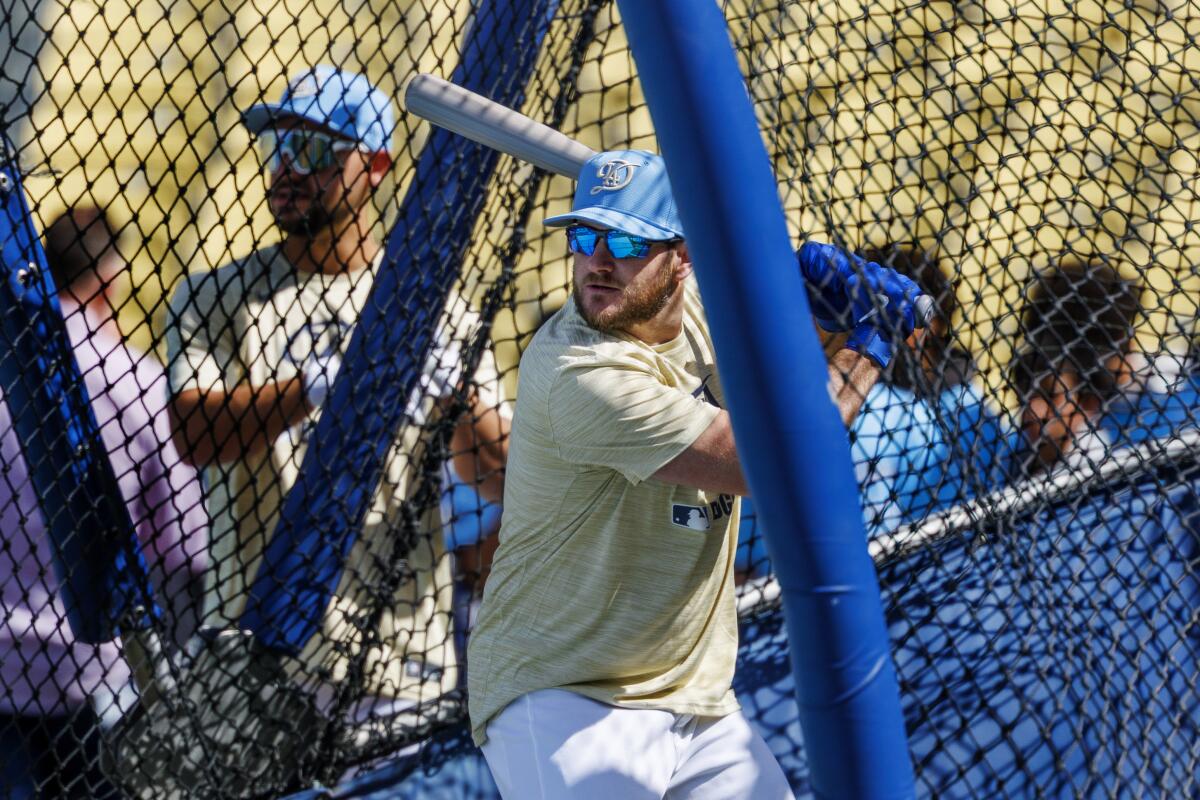Dodgers’ pitching in a good place ahead of potential NLDS matchup
The Dodgers are not here for conventional wisdom. The Dodgers are here to win the World Series.
So what if an unforeseen hurdle appeared in front of their October path? The Dodgers are on the verge of turning that hurdle into an unexpected but well-planned advantage on their quest to become baseball’s first back-to-back champions in 25 years.
Conventional wisdom says the odds favor a team with a bye, because that team can set up its pitching rotation for the division series just the way it wants while its opponent burns through its best arms in the wild-card series. The Dodgers are one win away from storming through the wild-card series and setting up their pitching rotation for the division series just fine, thank you very much.
That, it turns out, is what you can do when your star-studded starting rotation is healthy and effective for the first time all season, at precisely the right time.
The Dodgers thoroughly outclassed the Cincinnati Reds, 10-5, in Tuesday’s opener of the best-of-three wild-card series. If the Dodgers win Wednesday, or if they win Thursday, they would advance to what would be the premier matchup in all the National League playoffs: the Dodgers vs. the Philadelphia Phillies.
“I think the biggest downside of playing in a wild-card series, obviously, if you’re able to advance, is what your pitching looks like after that,” Dodgers president of baseball operations Andrew Friedman said. “That’s the cost.
“And I think, with our depth, that’s really mitigated.”
It ain’t over ‘til it’s over. If the Angels could go 6-0 against the Dodgers this season, the Reds could win the next two games.
However, the Reds used their best pitcher, Hunter Greene, in Game 1. The Dodgers have their best pitcher, Yoshinobu Yamamoto, ready to deploy in Game 2.
And, since the best-of-three wild card format was introduced in 2022, all 12 teams that have won Game 1 have gone on to win the series.
So let’s plan this out. If the Dodgers win Wednesday, Shohei Ohtani could start Game 1 of the division series Saturday. If the Reds force a decisive third game Thursday, Ohtani is the scheduled starter — and, if the Dodgers win, Tyler Glasnow, Emmet Sheehan and Clayton Kershaw all could be options for Game 1 of the division series.
Kershaw would be available for sure, as he is not on the wild-card roster and he would be pitching on regular rest.
Dodgers pitcher Clayton Kershaw would be available to pitch Game 1 of the NLDS if the Dodgers advance.
(Gina Ferazzi / Los Angeles Times)
“To have Clayton Kershaw standing there ready, no matter how we deploy our pitching this week, gets at the cost (of playing in the wild-card round) not being as great,” Friedman said.
And the division series includes an off day after each of the first two games, which would enable the Dodgers to use Snell on five days’ rest for Game 2 and Yamamoto on six days’ rest for Game 3.
The Dodgers have so much flexibility, in fact, that manager Dave Roberts declined to say that Ohtani would start Game 1 of the division series if the Dodgers close out the wild-card series Wednesday.
“You’re getting ahead,” Roberts said, “but one of the first two games, probably.”
It is important that Snell held the Reds to two runs in Tuesday’s victory, but it is more important that he pitched seven innings. The Dodgers asked their relievers to cover two innings with an eight-run lead, and it took four of them to do it.
The Dodgers’ road to success is clear: more of the starters, less of the erratic relievers, and less need to lean on Glasnow and Sheehan in an unfamiliar role.
“The deeper that the starters go in the game — one, it means that we’re pitching good; but, two, you’re giving the bullpen a break and a breather, and they get to be 100% every time they come out,” Snell said.
“That makes for a different game that favors us.”
The Dodgers improvised their way to a title last October, with three starting pitchers and four bullpen games. That was not conventional wisdom, either.
This time of year, however, most postseason teams have three or four reliable starters. The Dodgers have six. If they have to play in an extra round, well, what doesn’t kill them makes them stronger.



